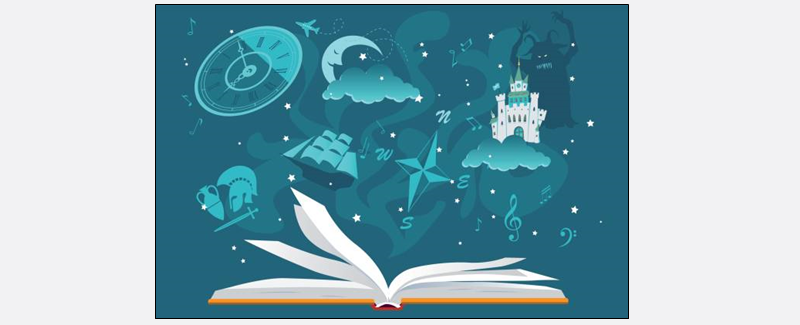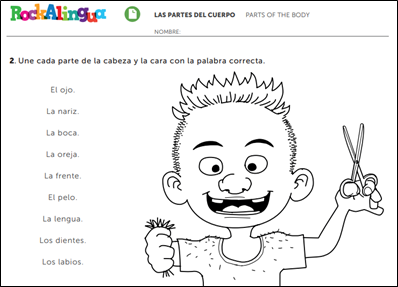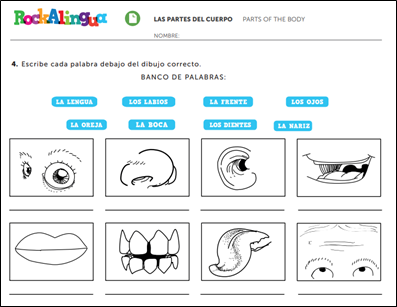El, La / The
WAYS WE CAN USE THE WORD(S)
REQUEST: e.g., Quiero la manzana favor (I want the apple, please).
SHARE INFORMATION: e.g., Ella vive en la casa roja (She lives in the red house).
ASK A QUESTION: e.g., ¿Es el chico de ayer? (Is it the boy from yesterday?)
CLARIFY: e.g., No, es el otro (No, it’s the other one).
CONJUGATIONS FOR GENDER AND NUMBER
|
SINGULAR |
PLURAL |
|
el/la |
los/las |
This core word activity sheet was created by Angela Rowell. It was adapted from the School Year of Core Words worksheet for "the" by Alison Lego, who can be contaced on Instagram @ thenewfriendscollective.
Snack/mealtimes: During mealtime or snack time, the adult can prompt the student to identify the names of the food items on the plate, e.g., la pera, el queso, el sándwich (the pear, the cheese, the sandwich).
Circle: Before reading aloud to students, the adult can announce “El cuento de hoy es…” (Today’s story is…)

Attendance: The adult can construct or purchase a “magic wand” (a pointer with a star on the end), and place images of all students on a wall or blackboard. Each morning, the adult can select one student to use the “magic wand” to point to which students are present in class that day, e.g., “Usa la varita mágica para mostrarnos quién está en clase hoy” (Use the magic wand to show us who is in class today).
Toys and Games: The adult can place various toys and boardgame materials inside of a box labeled “la caja de juegos” (the game box). When students express interest in playing a game, the adult can say, “Veamos qué hay dentro de la caja de juegos” (Let’s see what’s inside the game box).
I Spy Game: Students can play the game I Spy (Veo, veo), in which one student is attempting to guess what the other participant is seeing, sometimes when given the first letter of the object. When the student correctly guesses what the other player is seeing, the other player can produce an utterance such as, “Sí, es la chaqueta verde” (Yes, it’s the green jacket).
An example of a student exchange is below:
A: Veo, veo (I see, I see).
B: ¿Qué ves? (What do you see?)
A: Una cosita (A thing).
B: ¿Qué cosita es? (What thing is it?)
A: Empieza por la [letra] ¿Qué será, qué será, qué será? (It begins with the [letter]. What will it be, what will it be, what will it be?).
B: [Student B begins to guess]
The song “Veo, veo” by Parchis contains an example of this exchange at the beginning. Adults can use this song to teach the activity:
Recess: The adult can teach children how to play the game Mientras el lobo no está (While the Wolf is Away). For this game, one student or adult is selected to be the “wolf.” All the rest of the players join hands and sing a song with the lyrics “Juguemos en el bosque mientras el lobo no está; Juguemos en el bosque mientras el lobo no está ¿El lobo está?” (Let's play in the forest while the wolf is away; Let's play in the forest, while the wolf is away. Is the wolf there?"). When the “wolf” responds “Sí” (Yes), all of the players go running and the wolf tags a player who will become the new wolf, and the game repeats itself.
When teaching the game and song, the adult can show students the following video:
Juguemos en el Bosque | Children’s Song | By Plim Plim - Kids Songs & Episodes - Spanish
Here are some suggested books on YouTube that can assist in teaching the core word:
- El erizo y el globo | Children's Story Narrated by Apploide Educa
- The story of a hedgehog who discovers a box full of uninflated balloons, and how the hedgehog receives help from other animal friends in order to find a way to inflate the balloons.
- El oso dormilón| Children's Story Narrated by Cuentos Infantiles en Español |Original Music by Victor and Pablo Escalona
- This story, meant to relax and calm children, tells the tale of a bear who learns the importance of hibernation and rest, as well as hard work.
- El patito feo | Children’s Story Narrated by Spanish Fairy Tales
- The classic tale of an “ugly duckling” who goes on a journey to discover his identity and personal worth in the world.
- La ratita presumida | Children's Story Narrated by Cuentos Infantiles
- The story of a little rat who learns the importance of hard work and the disadvantages of vanity or selfishness.
- Uga la tortuga| Children's Story Narrated by Guiainfantil
- This is a story about a turtle who learns the importance of effort and perseverance.
- La oruga muy hambrienta by Eric Carle| Children's Story Narrated by Lee con Lucy
- This classic story, which follows the life of a very hungry caterpillar, teaches students about the days of the week and the importance of our diet.
Social Interactions: The adult can prepare an activity in which students share information about their family members through superlative phrases. Independently or with assistance, students will write the names of all of their close family members on a lined sheet of paper, one name per line. Then, they will write a superlative sentence about each person, e.g., “Pedro es el más alto de la familia,” “Mi abuela es la más graciosa de la familia” (Pedro is the tallest in the family; My grandmother is the funniest in the family). This activity can be presented to the whole class.
Modeling: The adult can model to students how an AAC system can be used to attach singular definite articles to nouns when appropriate, e.g., showing students how their systems can be used to produce utterances such as: el niño, la falda, la camiseta (the boy, the skirt, the shirt). Videos of the adult teaching this skill can also be given to the student for continued review.
The adult can prompt students to walk around the classroom and touch various items while stating what they are touching (using the singular definite articles), e.g., “la pizarra, el lápiz, el libro” (the blackboard, the pencil, the book).
Students can take turns coming up to the front of the classroom to write or trace the words el and la on the blackboard.
Fishing for Articles Game: The student can play the online game titled Pescando artículos (Fishing for Articles) on the Árbol ABC website which prompts student to differentiate between the correct usage of el, la, los, and las in diverse sentences.
Labelling Body Parts: Students can complete various activities related to labelling parts of the body while using the definitive articles, e.g., el ojo, la nariz, la boca (the eye, the nose, the mouth). Body parts worksheets can be downloaded from Rockalingua website.
Example 1:

Example 2:

- El baile del sapito | Children’s Song | By CARTOON STUDIO
- La vaca Lola | Children’s Song | By El Reino Infantil
- La gallina Turuleca | Children’s Song | By El Reino Infantil
- La lechuza | Children’s Song | By Plim Plim - Kids Songs & Episodes - Spanish
Art Activity: Students can color in templates of animals drawings, and next to the drawing, they can write a label of what type of animal it is, e.g., el gato, el perro, el oso (the cat, the dog, the bear).
Downloadable and printable coloring sheets can be found on Just Color Kids website.

Canva: Students can use Canva’s free book cover maker to make book covers for stories that they create in class. The book titles should include the words el or la, e.g., “El búho valiente” (The Brave Owl).
WORD WALL: Create a Word Wall and add el and la to the list.
READING and the Word Wall: Sound out the letters together. Have the students find the word on the AAC system.
WRITING and the Word Wall: Using a pencil or alternative pencil, have students try to type the word on the keyboard, adapted keyboard or write the word together.
Choosing Words for the Classroom Word Wall with Dr Caroline Musselwhite Video. Courtesy of Edmonton Regional Learning Consortium.